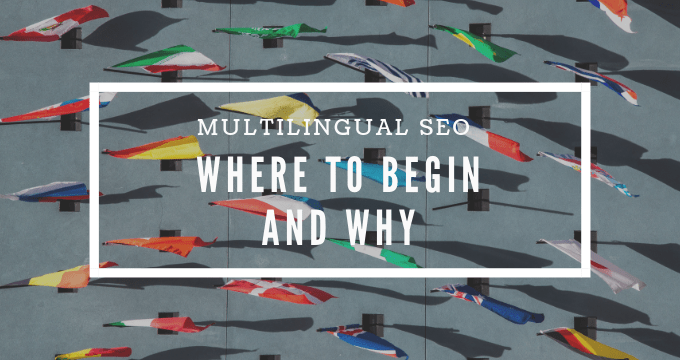
The internet has brought people around the world in closer contact with each other. Personal connections aside, the online medium has been the main accelerator for businesses broadening their reach. Inevitably, after borders have been crossed, language barriers are next in line to be dismantled. This is where multilingual SEO comes in to help web-based enterprises do business worldwide.
Setting up multilingual SEO for your business site can be a large and daunting task. The best first step you can take is getting a clear picture of where to begin, and what services you need to support you in the process. Here are the main things to keep in mind so you can translate your online business to a new language and expand your operations beyond your home base:
1. Plan Ahead and Strategize
To start with, you’ll need to look into where your current audience is based. Google Analytics is a great tool that can provide you with this information. What’s more, the popular search engine’s useful feature can also give you valuable insight into where you have a growing audience of interest. Finer details like visitor web browser language settings are also made available through Google Analytics. All of this data will feed into your multilingual SEO plan and help refine your strategy.
2. Assess Your Real Need
Effective multilingual SEO can come at too high of a price tag if a company doesn’t have any significant traction in a new country, let alone a different language. Taking a closer look at your traffic and user site behavior with Google Analytics can help evaluate whether the resources and effort that it would take to implement multilingual SEO are currently worth your while. If you have yet to hit the threshold in a different territory, it is best to put this SEO transition on the back-burner until you do.
3. Pick Your Target Countries Wisely
If your website does have enough momentum in other countries, the next step would be to shortlist the countries that you will be focusing on. At present, it is not possible to apply multilingual SEO to broader geographical regions. Instead, the choice has to be made on a country-specific basis. Maintaining multiple versions of your site and their respective content in different languages is not a simple task. So assessing whether to go ahead with all of your top target countries or just a select few is of utmost importance at this stage.
4. Differentiate Multinational vs. Multilingual Content
Multilingual SEO refers to the optimization of your online content in a number of different languages. Whereas multinational SEO is specifically tailoring content to the country in question, multinational content really only makes sense for online companies that need to target specific countries separately. This could be due to different legal and fiscal jurisdictions that may have separate implications for your service or product offer. Choosing one over the other will mean a different structural approach to optimizing your website.
5. Distinguish Between Location and Language
All too often, we tend to assume that language needs are defined based upon location. However, even within the same country, there may be other official languages that will need to be included in order for your business to operate. Moreover, in an increasingly globalized world, this matter-of-fact approach is becoming less relevant. Hence, some deeper digging into your site’s user profiles and behavior patterns can provide better clues on what the defining factor should be for your language offer online.
Before Jumping into Action with Multilingual SEO
The technical details that follow in setting up multilingual SEO require the help of an expert. The process is far too complex for any-sized business to venture into this vast SEO territory alone. Advice on which domain and URL structure is most suited to your specific enterprise needs should be sought.
For effective multilingual SEO, you’ll need to comply with the various search engines’ ranking rules to avoid any negative repercussions for your website. This includes taking the right measures to avoid any translated content being flagged as a duplicate. Contracting an experienced professional for the task will go a long way in helping avoid the usual pitfalls in the process. This way, it won’t end up costing your business more than what you can afford.
Best Practices for Website Translation
The translation quality of your website is just as important for SEO indexing as for user engagement. This is why any reputable SEO expert will always recommend using human translation over automated machine translation for website content. Despite recent major advancements in the machine translation, human translators are still the most effective means to adapt highly contextual language, allowing for nuances and subtlety that machine translators do not always catch. These differences can have a significant impact on website content, impacting both audiences and sales.
At Language Department, we have extensive experience in over 60 different languages. Our best-in-class translation services are the perfect complement to translating your company website and getting your valuable content ready for your multilingual SEO needs. Reach out to us today to learn more about how we can help you set your business up for success anywhere in the world.




